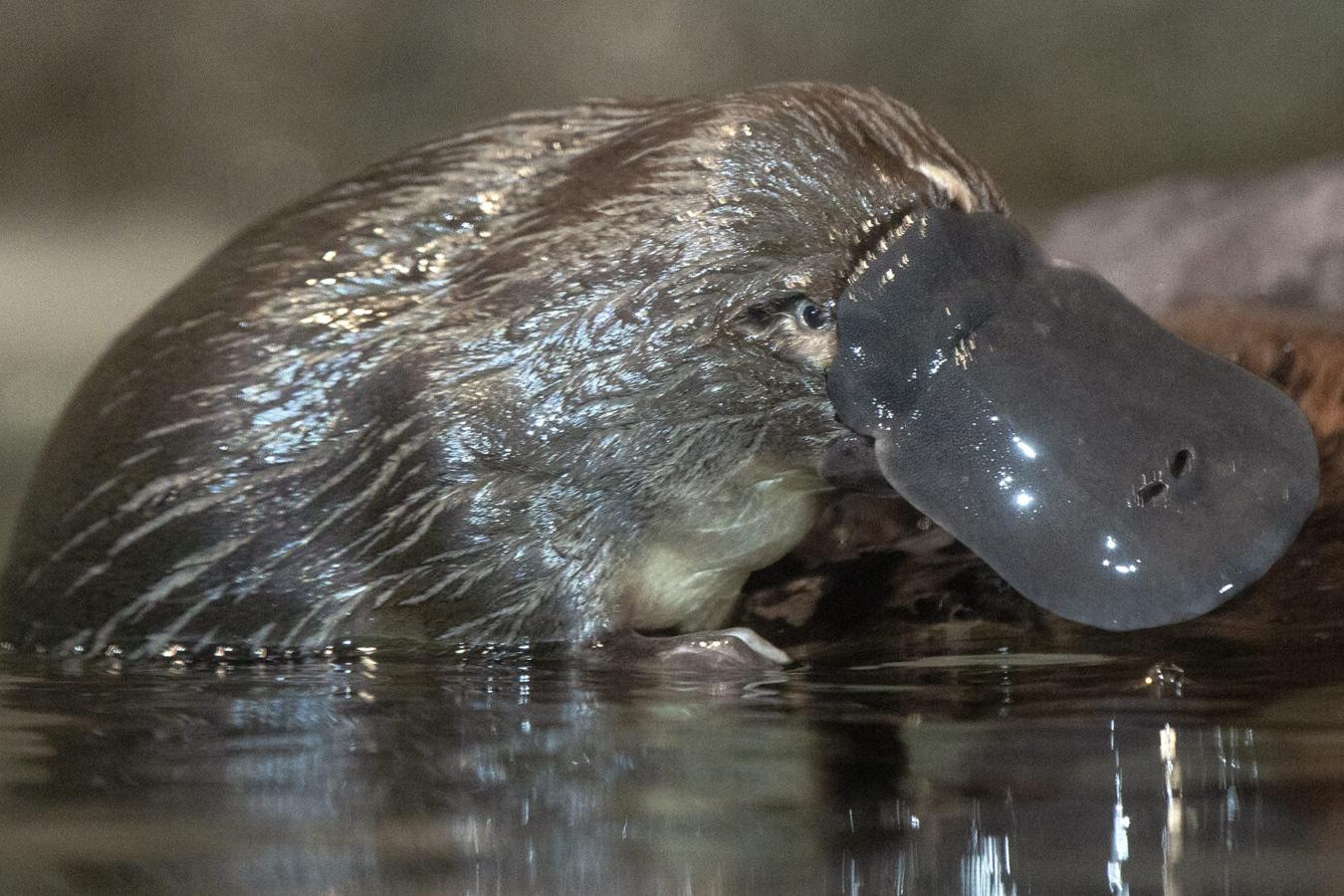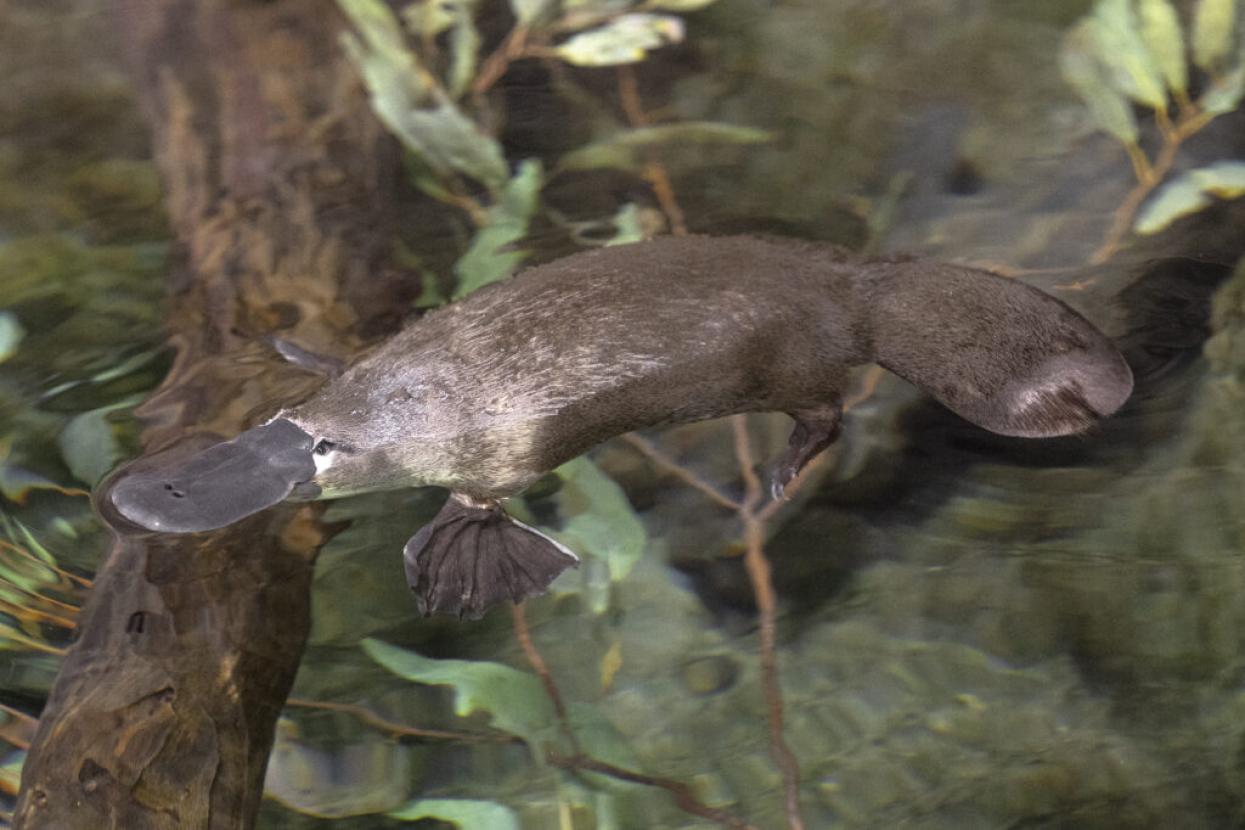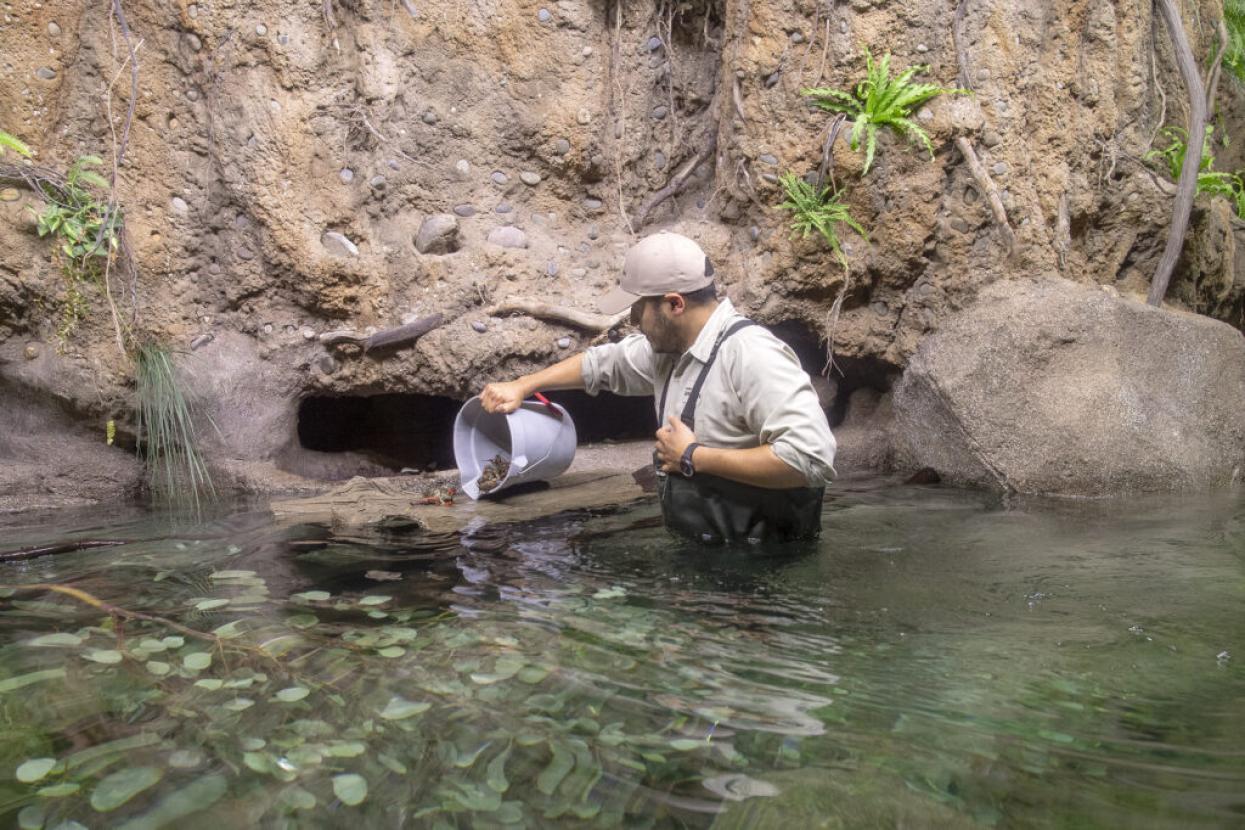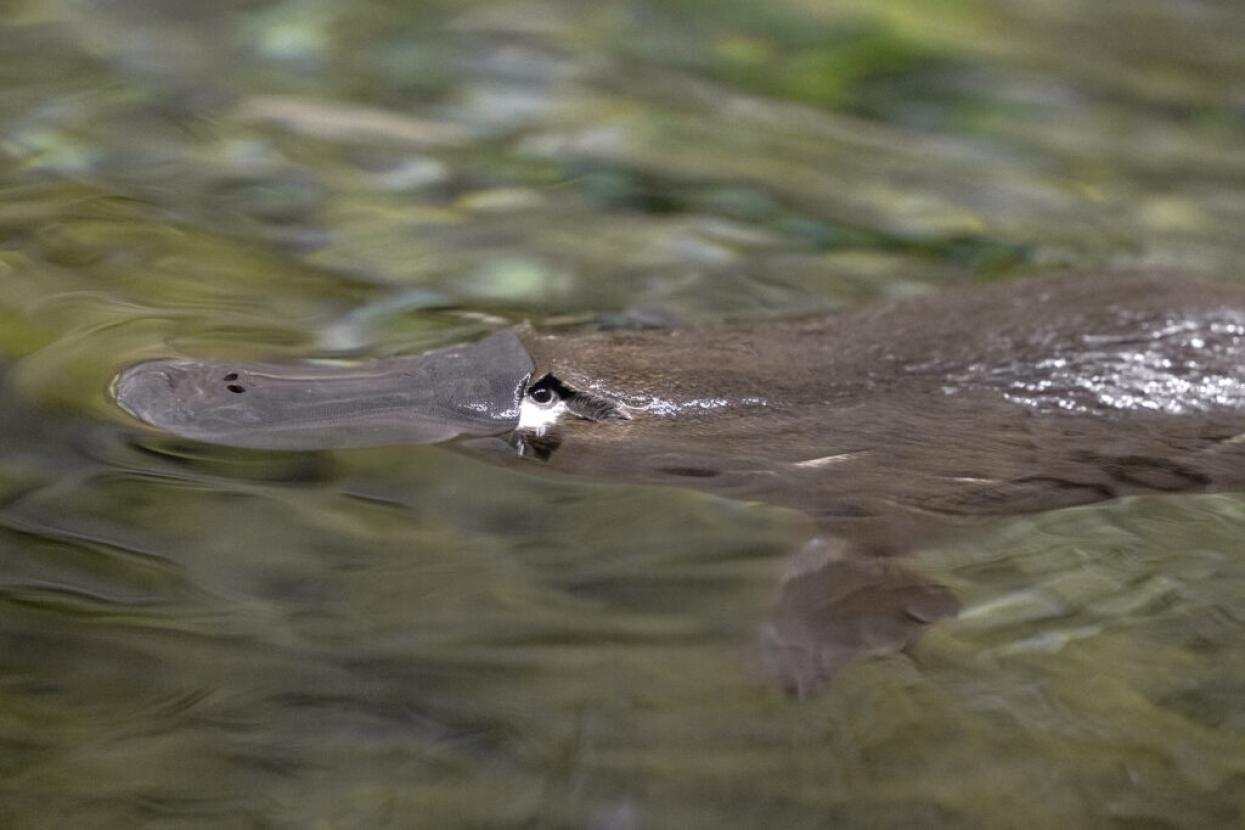
Platypus Care at the Safari Park
With its mix of unique features and characteristics, the platypus has intrigued people since its discovery in the late 18th century. I remember learning about Australian animals and reading about the platypus when I was in grade school, and I was hooked. So it was a full circle moment when, in the fall of 2019, I was at Los Angeles International Airport waiting for two platypuses to arrive. It’s been five years since Birrarung and Eve came to the San Diego Zoo Safari Park, and since then I have developed an even deeper appreciation for these fascinating mammals.
Brand-New Home
For their arrival, a new facility was built, taking recommendations and tips from other platypus houses in Australia. The platypus pair acclimated to their new home pretty quickly. One of the first things guests notice when they visit the Nelson M. Millsberg Platypus Habitat is the habitat is completely dark. In their native range, platypuses are nocturnal, and their foraging, courtship, and breeding behaviors all occur in the water. So when walking in, it takes a few minutes for guests’ eyes to adjust to our “moonlight” setting. Most guests see our platypuses active in this lighting; in the summer (while the park has extended hours), they may get the chance to see the area with the “sunrise” setting slowly starting to kick on.

Platypuses are comfortable both on land and in water. When a platypus floats, about 10 percent of their body stays above the surface.
When the lights begin to come on, this sends a signal to the platypuses that they should start getting ready to sleep. Once out of the water, a platypus will find a comfortable spot (usually a dark, cool burrow) and rest for up to 12 hours. With the platypuses resting in their nest boxes, we quietly close off access to the pools and get to work.
Our day starts bright and early at 6 a.m., and the first thing we do is look for where the platypuses have chosen to sleep. The male, Birrarung (named after a river in Australia; we call him Birra) sometimes likes to sleep in, and when we find him in a nest box, I can always count on finding him on top of any substrate or blanket, quietly greeting and sometimes nodding while I carefully give him a brief morning “hello.” Eve (she was named after Evelyn, one of her care specialists in Australia) is not as quiet—she likes to burrow herself as deep as she can get, and even before I open her nest box, she usually greets me with a low grumble. I imagine it’s her way of telling me that she wants to sleep in a little longer.
A Busy Day Every Night
Platypuses can forage for up to 12 hours each day, even longer under cold conditions. They are carnivores, and in their native range they commonly feed on bottom-dwelling crustaceans like crayfish, aquatic insect larvae, pupae, nymphs, and other invertebrates. When platypuses enter the water, their foraging behavior kicks in.
Sometimes called duck-billed platypuses, these aquatic mammals have a unique, flexible bill perfect for catching and grinding up prey. Over 40,000 electroreceptors in the bill act as an antenna to detect prey direction and distance. Only living prey produce this signal, so we often joke that when we become platypus specialists, we also become crayfish specialists. We house crayfish at the Safari Park, and have housed over 1,000 crayfish in this space.

Author Luis Ochoa adds more crayfish to the pool for the platypuses’ hunting—and eating—pleasure.
Every day we try and enter the pools and replenish the supply of crayfish, earthworms, mealworms, blackworms, and crickets. Platypuses can weigh up to 6.6 pounds; ours weigh between 2.2 and 3.3 pounds, depending on the time of the year. They can eat over 20 percent of their body weight daily, and a lactating female can eat up to 100 percent of her weight each day!
One of the first things we learned when becoming platypus care specialists is how to safely work around these animals. Platypuses are born with spurs on the inside of their hind feet. Females eventually shed their spurs during development, but males’ spurs will grow to the size of a pencil point. The spur is attached to a gland, which produces large amounts of venom during the breeding season. This means we only carefully handle the platypus when needed, and don’t share space with the male in the pools. We can, however, share pool space with our female. Working in a pool while a platypus swims around will always be the career highlight for me.
Platypuses are usually solitary. In their native habitats they would avoid each other through most of the year. Breeding is seasonal, and from late July through early November we give them access to each other. Like the echidna, the platypus is a monotreme. While most other mammals give birth to their young, platypuses lay eggs, incubate them, and nurse their offspring.
Found mostly in eastern mainland Australia, platypuses are elusive, and there isn’t much known about them. Luckily there is a strong support community, and once a month we participate in what I like to call a “Platty Chatty” with specialists in Australia who also care for platypuses. We meet over video call; with the time difference we have to meet in the late afternoon for us, early morning for them. This gives us an opportunity to share best practices, compare notes on breeding and courtship behavior, or even just share fun videos of platypuses interacting with their specialist after a great learning session.
Looking Back, Thinking Ahead
The platypus has been around a very long time and is the sole living representative of its family Ornithorhynchidae and genus Ornithorhynchus. They are a resilient species, with whole-genome data suggesting that modern platypus populations can be traced back to at least 800,000 years ago. Lately, however, there has been cause for concern.

A platypus’ unique bill is soft and pliable, and covered in more than 40,000 electroreceptors that help it detect and track prey like crayfish.
The Australia wildfires that ravaged regions of New South Wales in 2020 brought a lot of ash, debris, and erosion to the waterways. As these became more congested, food sources became scarce, and traveling and burrowing became more difficult for the platypus. They are currently listed as Near Threatened on the International Union for Conservation of Nature Red List, and the population is declining. As the species faces the threat of local extinction, San Diego Zoo Wildlife Alliance is proud to support a cutting-edge conservation effort in southeastern Australia that benefits endemic wildlife, including the platypus. A collaborative team is using a new technology called environmental DNA to map the distribution to the platypus. As living things shed their DNA through skin, hair, scales, feces, and eggs, water samples are collected and filtered through a special unit that strains out cells and analyzes them to determine the wildlife present. San Diego Zoo Wildlife Alliance is pleased to be supporting the “boots on the ground” efforts to preserve endemic wildlife, Including the platypus, for generations to come.
The Safari Park’s platypuses can be seen in the Nelson M. Millsberg Platypus Habitat, or on the live Platypus Cam.




